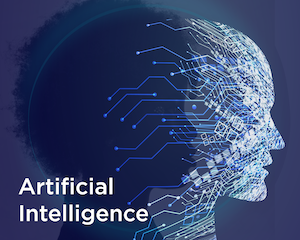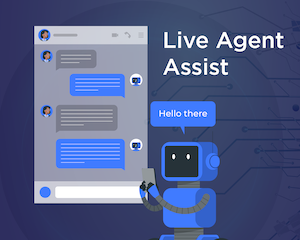CX in the Augmented Age
Welcome to the Augmented Age! Maurice Conti, a TEDx speaker/tech authority/moonshot expert introduced us a couple of years ago to this concept. The premises are compelling: In this era, there are computational systems that will help us create, cognitive systems that will help us think, and a digital nervous system that will connect us to the world far beyond what our natural nervous system can offer.
According to Maurice, revolutions are happening with much faster cycles. The first was hunter-gatherer, and lasted millions of years. The agricultural revolution arrived and imposed itself for thousands of years. The next disruption was the industrial age, which lasted centuries until the information age arrived. The information age has been around for decades and introduced computers in the weave of our lives and economic activities. This age has come to an end.
We are in the dawn of the Augmented Age. We took evolution a step further by making the machines not only performing repetitive tasks and calculus but also by augmenting our capabilities. It is about empowering human capabilities, not replacing humans with machines. (If you’re interested, Mr. Conti’s full talk is found here.)
Collab – AI & customer support
As a next-generation contact center software provider, Collab places itself at the forefront of innovation and disruption. Ten years ago, when I began at Collab, artificial intelligence was a buzzword and some people were skeptical of our strategy to embed artificial intelligence in our products. Nowadays, no one questions the purpose.
AI provides quick and immediate responses, allows companies to reduce costs, and deliver consistent interactions in any language at any interaction touchpoint. AI can write,
speak, video call, understand our intents, analyze sentiment, vocal tone & facial expressions, mine data, and much more
These systems, once trained, will not search for work somewhere else, so there is zero churn. They ensure 24/7 availability and minimal error margins. They enhance human productivity, augmenting its capabilities.
At Collab, we are keen to explore paths to deliver great customer support and AI plays a major role, especially in three key vectors: Bot Flows, Speech Analytics, and Live Agent Assistance.
Bot Flows
Customer service and bots walk hand-in-hand. They account for most of our self-service engagements with companies. By 2025, 40% of customer service engagements will be handled in the first contact through self-service or assisted service, forecasts Gartner, and the trend is to grow exponentially.

With our software, building bots is done on a drag and drop interface, with no code. People from business and functional teams can adjust these scripts via OneContact Flows. Recently, we have made it possible to integrate with cognitive services to deliver Intelligent Bots, that learn with each interaction, understanding customer intents, and improving the best way to solve them. For an end customer to deploy these bots, they simply add a widget to a webpage or social media channel. It sounds simple – and it is – but feeding the bot with the information it needs to reply to customers is the real challenge.
Recently, we have boosted our bot intelligence capabilities with an innovative offer from WDS, a fellow Lumine company, specializing in device knowledge and intelligence. Our cooperation resulted in BotExpert, a new and differentiated offer on the market that delivers ready-to-use bots.
BotExpert allies our contact center & bot technology to a cloud-based knowledge base (provided by WDS). The use cases are numerous. For Telcos, the knowledge base is pre-loaded with the comprehensive knowledge of over 16.000 devices, each with up to +450 different characteristics. Any question about device usage can be quickly solved by the Bot, which understands the customer inquiry via Natural Language Processing, queries the knowledge base, and composes the answer-back.
We are currently in the process of expanding this to other knowledge areas, such as being able to respond to billing inquiries (integrating with VAS-X, another company within Lumine). These group synergies are taking BotExpert to a whole new level, and the business possibilities are impressive.
Speech Analytics
Vocal or text-based conversations with customer support contact centers generate Terabytes of recordings. How do you learn from that huge dataset? In the past, a quality monitoring team would carefully select a sample of which recordings to listen to.
Today, an AI machine can listen not to a sample but to all of these recordings and identify relevant outliers. These interactions are automatically identified based on indicators, such as their volume variation (someone started to yell), abnormal silence (someone hesitated for too long), overlapping streams (speaking over each other), use of improper language or even a simple mention of a competitor.
Better than this, these systems can now estimate sentiment in each phrase that was said (or written), both by the Customer and the Customer Service Representative (CSR). So, if an interaction starts with negative customer sentiment and ends with a positive score, it should be analyzed and perhaps considered as a best practice. The opposite is also true, and like a growing child, many of these systems learn even better from negative experiences (ex: what you are not expected to do, do!).

Live Agent Assistant
Glad you have read it this far! Kudos to you. Our third pillar is where the first two technologies merge.
Imagine a conversation where a customer is speaking with a human CSR. We keep the bot in the conversation, like if it was a conference between the three parties. The bot is carefully listening. When he finds an intent he recognizes, he will suggest a recommended action to the human CSR. Look at this example, in which a customer is trying to solve a bill shock:
“Customer: I cannot understand how I spent +100 USD this month vs previous?”
“CSR: One moment, while I fetch the relevant info”. The bot listened and instantly pulls up consumption history, newly activated services, roaming charges, etc. Also, automatically detects it was a roaming abnormal variation, and it displays the pricing plan for international extra charges, with relevance to the newly visited country. It can also suggest the CSR a recommended course of action: upgrade to the “International Traveler” tariff, with a 2-year contract and include this month’s invoice in the new plan.
In this example, the bot provided guidance to the CSR, and not to the end customer. It was up to the human to decide on how to use this extra intelligence.
Closing Thoughts: The Reuters Story
Did you know that Reuters started with pigeons? It first used carrier pigeons to deliver stock market prices in 1850. A major disruption occurred: the telegraph. Reuters had to decide whether to raise more and better pigeons or to change. They started investing in the telegraph and expanded beyond Europe into the Far East.
Then a new disruption happened – the internet. Reuters again reinvented itself and dropped/sold all the cabling infrastructure they had in place.
Today, Reuters has bots writing news stories. Bots that at the speed of light, search the Internet for events and giving them to journalists with a confidence score associated. It is up to the human journalist to decide if he wants to pursue the story or not as if his skills are augmented.
Welcome to the Augmented Age… Hope to take this illuminating journey with you.




